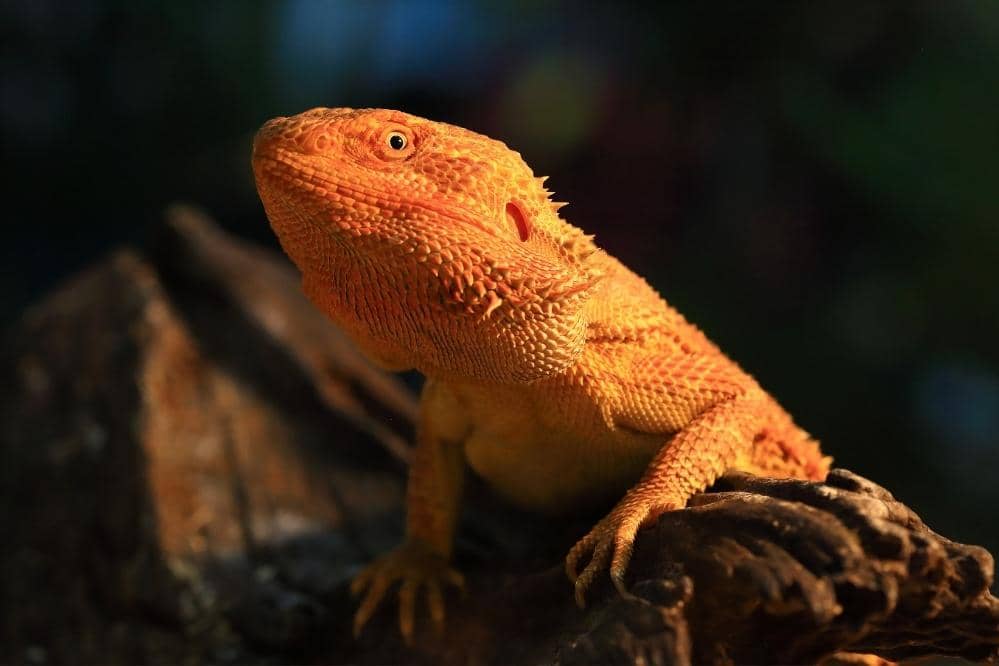Like other pets, bearded dragons have their own ways of communicating, and they display changes in mood, emotions, well-being, health and feelings through a variety of behaviors. However, some behavioral changes may be difficult for a novice owner to understand. Changes in body color, arm-waving, black beard and head bobbing are a few ways that bearded dragons commonly use to express different conditions. Even novice owners can detect these signals easily.
Most new reptile enthusiasts are concerned when they first see their bearded dragons turn white. So we created this article to answer “why did my bearded dragon turn white?” and “Is it a serious concern if my beardie is turning white”.
My Bearded Dragon Is Turning White “Should I Worry?”
As stated above, the bearded dragons use a wide variety of methods to communicate, and turning body color to white is one of the most common methods. This happens for a variety of reasons, and most of the time, it’s perfectly normal and not a matter of concern. However, sometimes it can be a sign that something is seriously wrong.
It is important to note that bearded dragons don’t turn white their whole body at once; it happens in patches and is generally more easily seen at the head, tail, and limbs. Different body parts turn white for various reasons, so it’s crucial for a beardie owner (especially a novice one) to closely monitor his pet’s behavior and understand how he behaves normally. Only then he will be able to differentiate between normal and abnormal behavior and handle the situation properly.
What Causes My Bearded Dragon To Turn White?
A few common reasons that cause a bearded dragon to turn white are discussed below.
- Shedding
- High Temperature
- Sleeping
- Dying
- Medical Issues
Shedding
Shedding is the most common reason that makes your bearded dragon turn white. Generally, the skin turns white, two to three weeks before the actual shedding process starts. In reptiles, shedding is a natural process of replacing old skin with new skin. However, in bearded dragons, it happens in patches. So only those parts of the body will turn white, where shedding will begin. Generally, adult beardies shed only a few times yearly; however, young beardies shed a lot more because of their rapid growth.
It’s crucial to note that shedding is a natural process, so don’t interfere with it, and never try to peel off even a small flap of skin from your pet’s body. This can cause pain to your pet and make him more prone to skin infections.
However, maintaining 30% to 40% humidity inside the enclosure and daily misting will help a lot because it will make the skin soft and shedding easier. If some shed is stuck (mostly occurs at the tail or toes), Soak your beardie in warm water for 20-30 minutes (to allow it to become soft) and then slowly remove it with the help of a soft toothbrush.
Immediate removal of the stuck shed is necessary because if it accumulates there, it could lead to constriction. Further delay will result in necrosis, and you will have to amputate your beardie limb.
High Temperature
When the temperature inside the container rises above the required degrees, the bearded dragons change their body color to white. This is their way to counter high temperature and maintain their body’s temperature because naturally, the white color absorbs less heat. Similarly, they also turn dark to absorb more heat if the temperature drops too low.
The recommended basking temperatures for adult and baby beardies are 38° C (100°F) and 43° C (110°F), respectively. And the temperature of cool areas should not drop from 29° C (85°F) for adults and 32° C (90°F) for babies.
Sleeping
You should not be concerned at all; if you notice your bearded dragon turning white while sleeping. It’s natural, and experts associate it with their circadian rhythm. Some experts and beardie owners also believe that if a bearded dragon turns white while sleeping, it is a sign that your pet is at ease, relaxed and comfortable.
However, it must regain its normal color immediately after waking. If it doesn’t, there must be something wrong, and you should consider other factors or contact a vet.
Related Article: Why Does My Bearded Dragon Sleep in the Corner?
Dying
Bearded dragons also turn white when dying (whether they have reached their biological age or any other reason). However, a dying beardie will also show some other signs like off-feed, weight loss, lethargy, swollen tail/limbs, sunken eyes, and dark beard while other body parts are white.
Medical Issues
Certain medical issues can also turn your beardie white, like damage to internal organs (especially liver and kidney) and metabolic bone disease. So if your pet is not shedding, the container’s temperature is normal, and everything else is fine; still, he is pale in color, you need to take him to a vet immediately.

